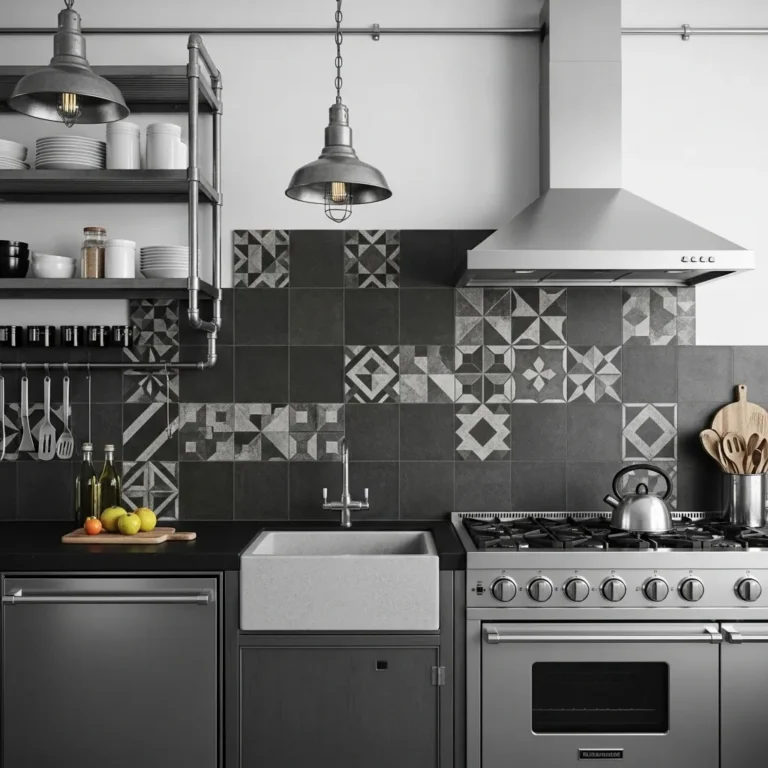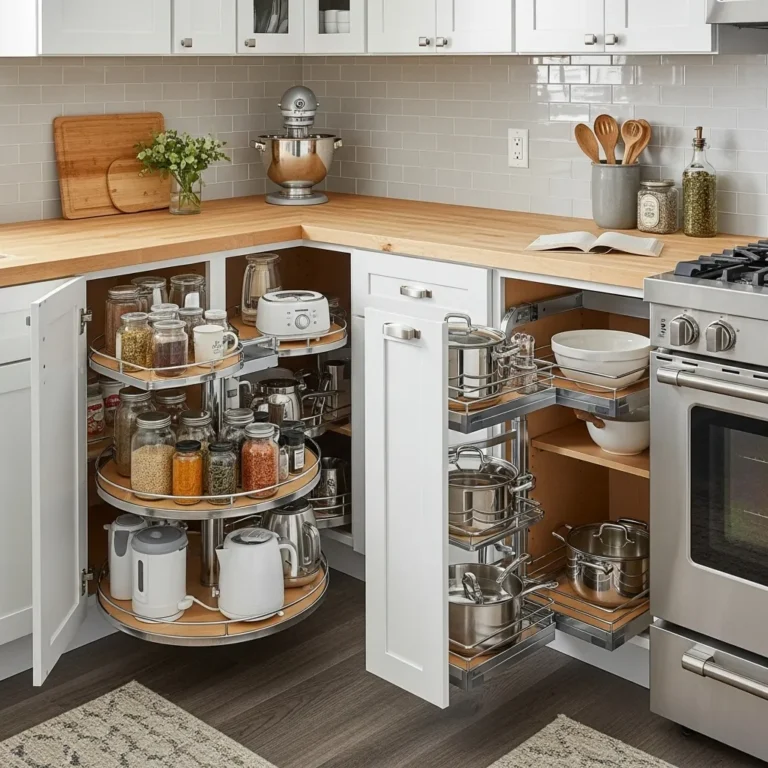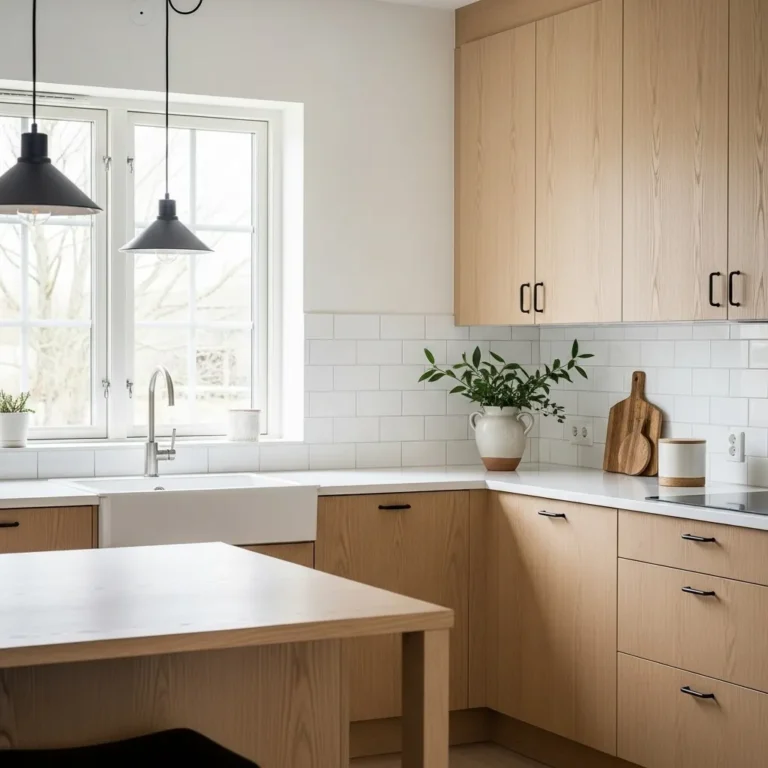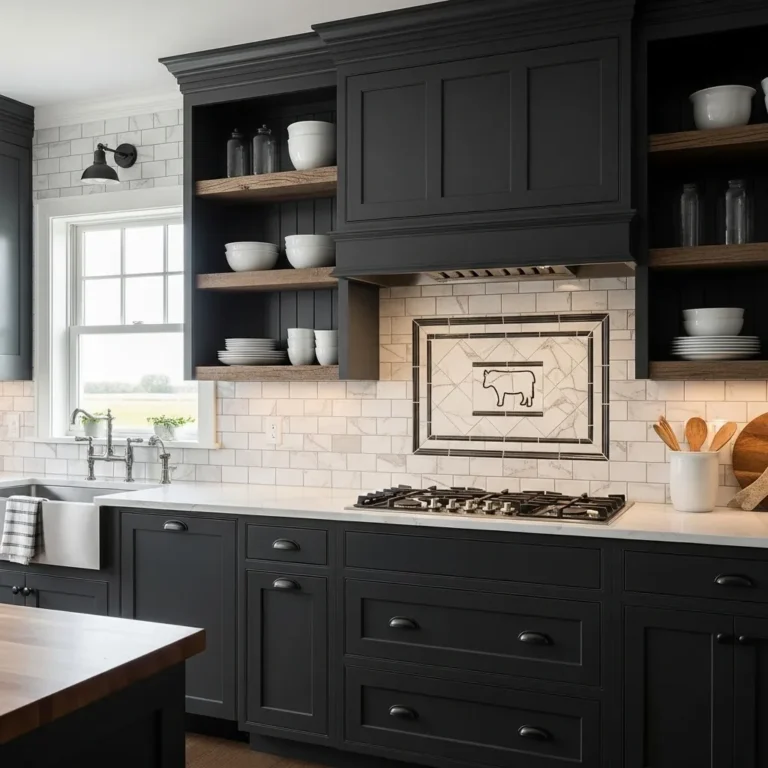Elegant Kitchen Design Meets Modern Minimalist Style – Transform Your Space Today!
A modern minimalist kitchen is all about simplicity, clean lines, and functionality, while still maintaining an air of elegance. The idea is to create a space that feels open, calm, and clutter-free, focusing on essentials without sacrificing style. By incorporating high-quality materials, sleek designs, and smart storage solutions, you can create a kitchen that is not only practical but also visually stunning. In this article, we will explore 15 elegant and minimalist kitchen design ideas that will help you achieve a beautiful, modern kitchen that suits both your lifestyle and aesthetic.
1. Clean Lines and Simple Shapes

In minimalist kitchen design, the key focus is on clean, straight lines and simple shapes. This approach avoids any intricate details or unnecessary ornamentation, which creates a sense of calm and order. Cabinets and counters should have smooth, flat surfaces with sharp, defined edges, free from excessive moldings or decorative elements. This design philosophy embraces simplicity, using geometry and proportion to create a visually pleasing, balanced look. The result is a sleek and sophisticated kitchen where everything has its place, and the design feels open and uncluttered.
2. Neutral Color Palette

A neutral color palette is essential in modern minimalist kitchens. Soft shades of white, gray, beige, and muted earth tones create a serene and timeless atmosphere. These colors provide a blank canvas that allows the design elements, such as textures and materials, to shine without overwhelming the space. Neutral tones also promote a sense of openness and light, making even smaller kitchens feel larger. By using a restrained color scheme, the kitchen can maintain a cohesive, elegant look that is both calming and modern, without feeling too stark or cold.
3. Open Shelving

In minimalist kitchen design, open shelving plays a crucial role in reducing visual clutter and contributing to the clean, simple aesthetic. Open shelves allow you to display only the essentials—items that are functional and beautiful, like carefully arranged plates, glassware, or a few select pieces of art. By keeping the shelves organized, you eliminate the need for closed cabinets that can sometimes create a feeling of heaviness or chaos. This design element emphasizes the idea of “less is more,” and it works especially well when paired with neutral colors and sleek materials. However, it’s important to keep the shelves tidy and minimal to avoid clutter.
4. Hidden Appliances

To maintain the minimalist look, integrating appliances into the cabinetry is a popular design choice. Hidden appliances—such as refrigerators, dishwashers, and microwaves—are seamlessly built into cabinets, making them virtually invisible when not in use. This integration not only contributes to a smooth, continuous surface but also reduces distractions, keeping the kitchen clean and focused. Many modern kitchens utilize panels that match the cabinetry, so appliances blend in effortlessly, creating a streamlined, polished appearance. This concept also allows for a more uniform and organized space, as all visible surfaces are kept clear and uncluttered.
5. Sleek Countertops
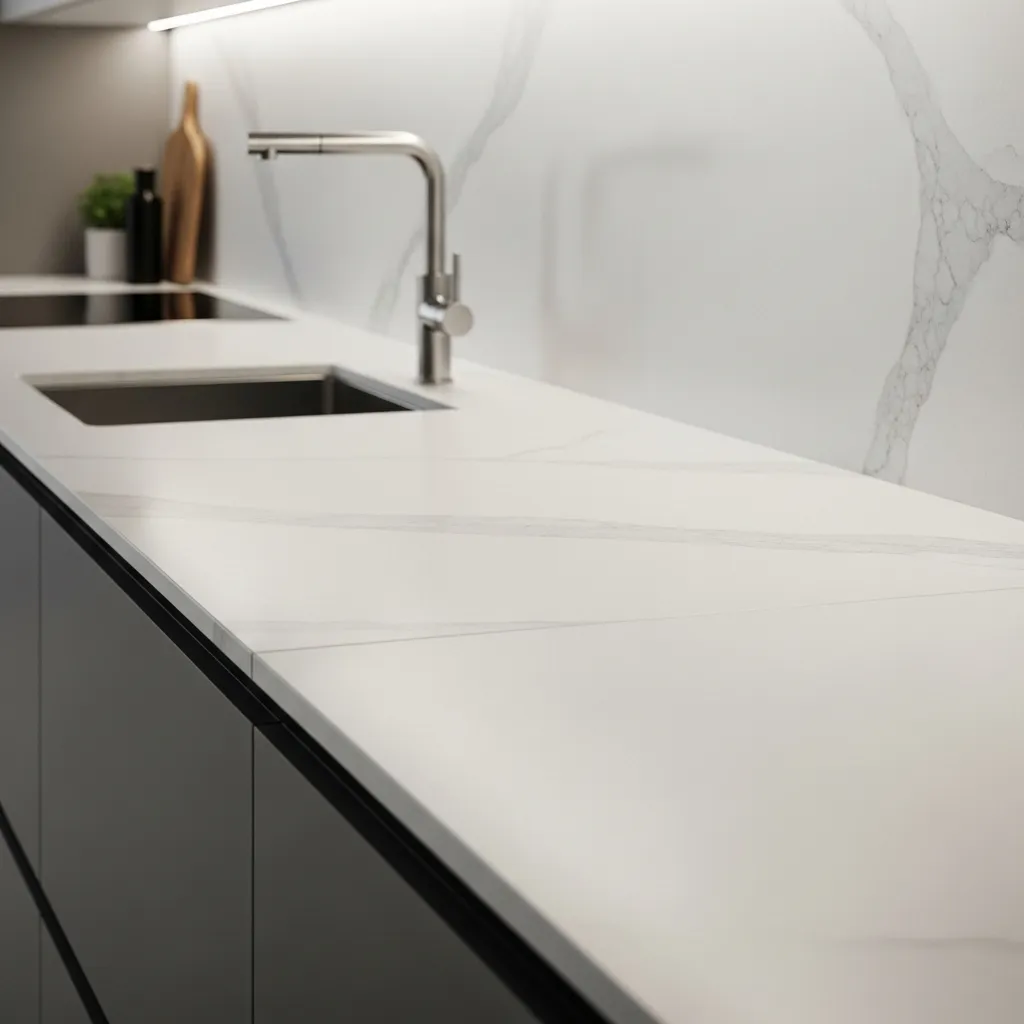
Sleek, minimalist countertops are a hallmark of modern kitchen design. Materials like quartz, concrete, and granite are commonly used because they offer a smooth, seamless surface that complements the minimalist aesthetic. These materials are not only visually attractive but also highly durable, making them ideal for the kitchen. A continuous, uninterrupted countertop surface gives the kitchen a modern, clean look that exudes luxury. To enhance the minimalist vibe, opt for countertops with no visible seams or edges, allowing the material to flow naturally. This creates a cohesive design that is both functional and elegant.
6. Smart Storage Solutions
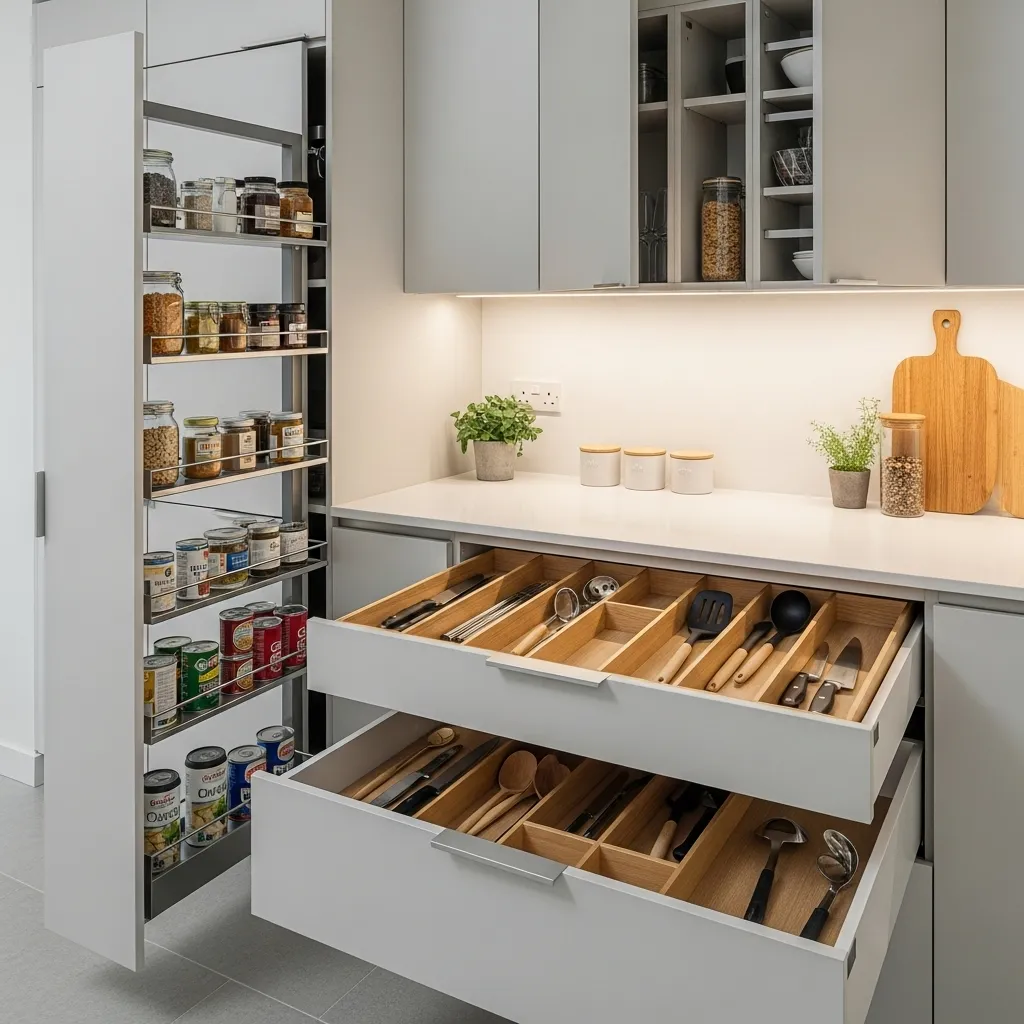
In a minimalist kitchen, smart storage is essential to maintaining a clutter-free environment. The key is to incorporate hidden storage solutions that maximize space while keeping everything neatly organized. Pull-out cabinets, deep drawers, and concealed compartments are all popular choices. For example, a pull-out pantry or built-in spice rack can provide easy access to frequently used items without interrupting the design flow. Custom cabinetry with integrated organizers helps to keep countertops clear, making it easy to store items while maintaining a sleek, open look. This approach ensures that the kitchen remains both functional and visually appealing.
7. Monochromatic Scheme

A monochromatic color scheme uses varying shades of one color to create a cohesive and visually harmonious space. In a minimalist kitchen, this approach can create a serene and sophisticated environment. For example, a kitchen in shades of white, from the cabinetry to the countertops, creates a sleek, unified look. Alternatively, varying shades of gray or beige can add depth and dimension while maintaining a simple, elegant aesthetic. A monochromatic palette works well in minimalist designs because it avoids visual distractions and emphasizes the beauty of the materials and the design itself. When paired with thoughtful lighting and carefully chosen materials, this approach can elevate the space without the need for bold colors or patterns.
8. Minimalist Lighting Fixtures

Design Tip: When designing a modern minimalist kitchen, lighting should be subtle but effective. Opt for sleek, simple lighting fixtures such as recessed lights or linear pendant lights. These fixtures provide ample illumination without drawing attention away from the overall design. For a more dramatic effect, consider a statement light fixture, but keep it minimalist—think geometric shapes, matte finishes, or slim silhouettes.
Styling Tip: Layer your lighting for flexibility. Use under-cabinet lighting to highlight your countertops and task areas, while pendant lights above the kitchen island can create a focal point. Dimmer switches can also help you adjust the lighting to suit different moods, whether you’re cooking, entertaining, or relaxing.
9. Floating Cabinetry
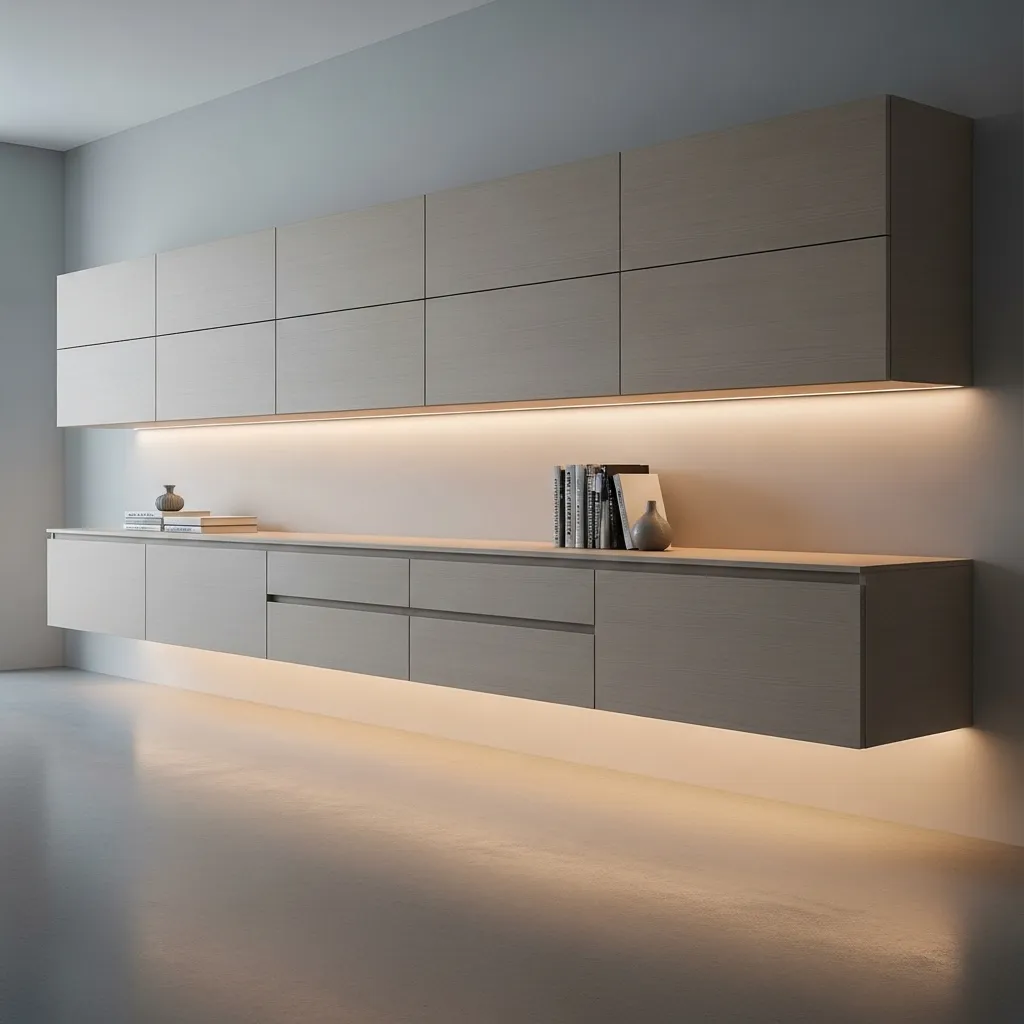
Design Tip: Floating cabinets are a modern design feature that enhances the sense of space in your kitchen. These cabinets are mounted on the wall, leaving the floor visible beneath them, which creates an open, airy feel. They work particularly well in minimalist kitchens, as they eliminate bulky, floor-standing cabinetry and provide a clean, unobstructed line of sight.
Styling Tip: To make the most of floating cabinetry, keep the cabinet fronts simple—opt for flat panels or a matte finish. Consider adding hidden or integrated handles for an ultra-clean look. Pair floating cabinets with sleek, modern materials like concrete or wood to maintain a contemporary feel while introducing warmth or texture.
10. Uncluttered Backsplash

Design Tip: In minimalist kitchens, less is more, and that extends to the backsplash. A simple, neutral backsplash made of materials like white subway tiles, smooth marble, or large-format stone keeps the space looking clean and unpretentious. Choose a backsplash that complements your countertops and cabinetry without creating too much contrast or competition.
Styling Tip: To maintain the minimalist look, avoid bold patterns or colorful tiles. Instead, opt for solid-colored tiles or continuous materials that flow seamlessly from the countertop to the wall. A seamless backsplash, where the countertop material extends to the wall, is a great way to achieve a sleek, cohesive look.
11. Integrated Sink and Faucet

Design Tip: To maintain the minimalist aesthetic, integrate your sink and faucet into the overall design. An undermount sink installed flush with the countertop creates a smooth, uninterrupted surface. Pair it with an integrated faucet that blends into the design, ensuring that it doesn’t disrupt the sleek lines of the kitchen.
Styling Tip: Opt for a faucet with a simple, modern design—think matte black, brushed metal, or polished chrome. Choose a faucet that complements your overall color scheme, ensuring it doesn’t overpower the other design elements. If you’re looking for added functionality, go for a touchless or pull-down faucet for both convenience and style.
12. Smart Technology Integration

Design Tip: Modern minimalist kitchens often incorporate smart technology to increase functionality while maintaining clean lines. From touchless faucets to smart refrigerators and built-in coffee makers, these devices can streamline your cooking and cleaning experience without compromising the kitchen’s design. Choose appliances and gadgets that are sleek, high-tech, and seamlessly blend into your cabinetry.
Styling Tip: When selecting smart appliances, choose those that come with hidden or integrated features. For example, a refrigerator with cabinetry panels that match the kitchen’s aesthetic or a cooktop with an integrated vent will keep the minimalist look intact while adding high-end functionality. Use built-in charging stations to keep devices like phones and tablets neatly stored and out of sight.
13. Functional Design

Design Tip: In a minimalist kitchen, functionality is just as important as aesthetics. To create a space that’s both elegant and practical, focus on smart storage solutions that make everyday tasks easier. Custom cabinets with built-in drawers, pull-out pantry units, and hidden trash bins will help keep the kitchen organized while maintaining a clean, simple appearance.
Styling Tip: Choose cabinetry with hidden or integrated handles to reduce clutter and maintain sleek lines. For a clutter-free counter, use pull-out shelves or rotating pantry systems for easy access to ingredients and kitchen essentials. When everything has a designated spot, your kitchen will stay tidy and visually appealing, allowing the minimalist design to shine.
14. Open Floor Plan

Design Tip: An open floor plan is essential to the modern minimalist look, especially when you want to make your kitchen feel spacious and connected to other areas of the home. By removing barriers between the kitchen, dining, and living spaces, you can create a seamless flow that promotes interaction and a sense of openness.
Styling Tip: To keep the design unified, use consistent flooring materials and color schemes throughout the open spaces. If your kitchen opens into the living room, for instance, use the same tones for cabinetry, countertops, and the surrounding décor. Keep the furniture and accessories in the dining and living areas minimalist too, so the kitchen remains the focal point of the space.
Conclusion
Creating a modern minimalist kitchen is about embracing simplicity, functionality, and elegance. By focusing on clean lines, neutral colors, and thoughtful design choices like hidden appliances, sleek countertops, and integrated smart technology, you can transform your kitchen into a serene, clutter-free space that exudes sophistication. Incorporating elements such as floating cabinetry, minimalist lighting, and smart storage solutions will not only enhance the visual appeal but also make your kitchen more efficient and enjoyable to use. Ultimately, a minimalist kitchen is a balance of form and function, providing a timeless, modern space that perfectly suits today’s lifestyle.


